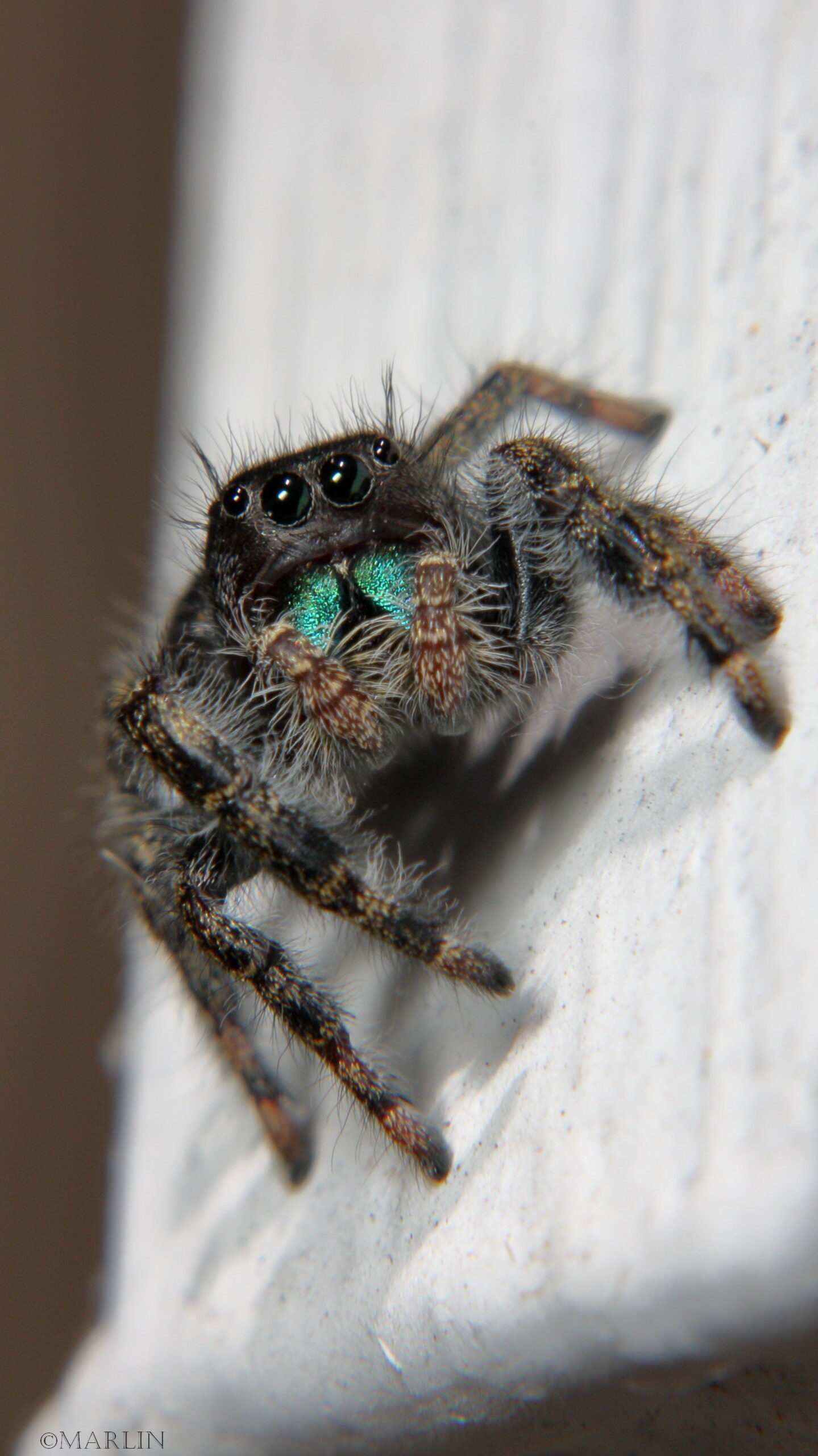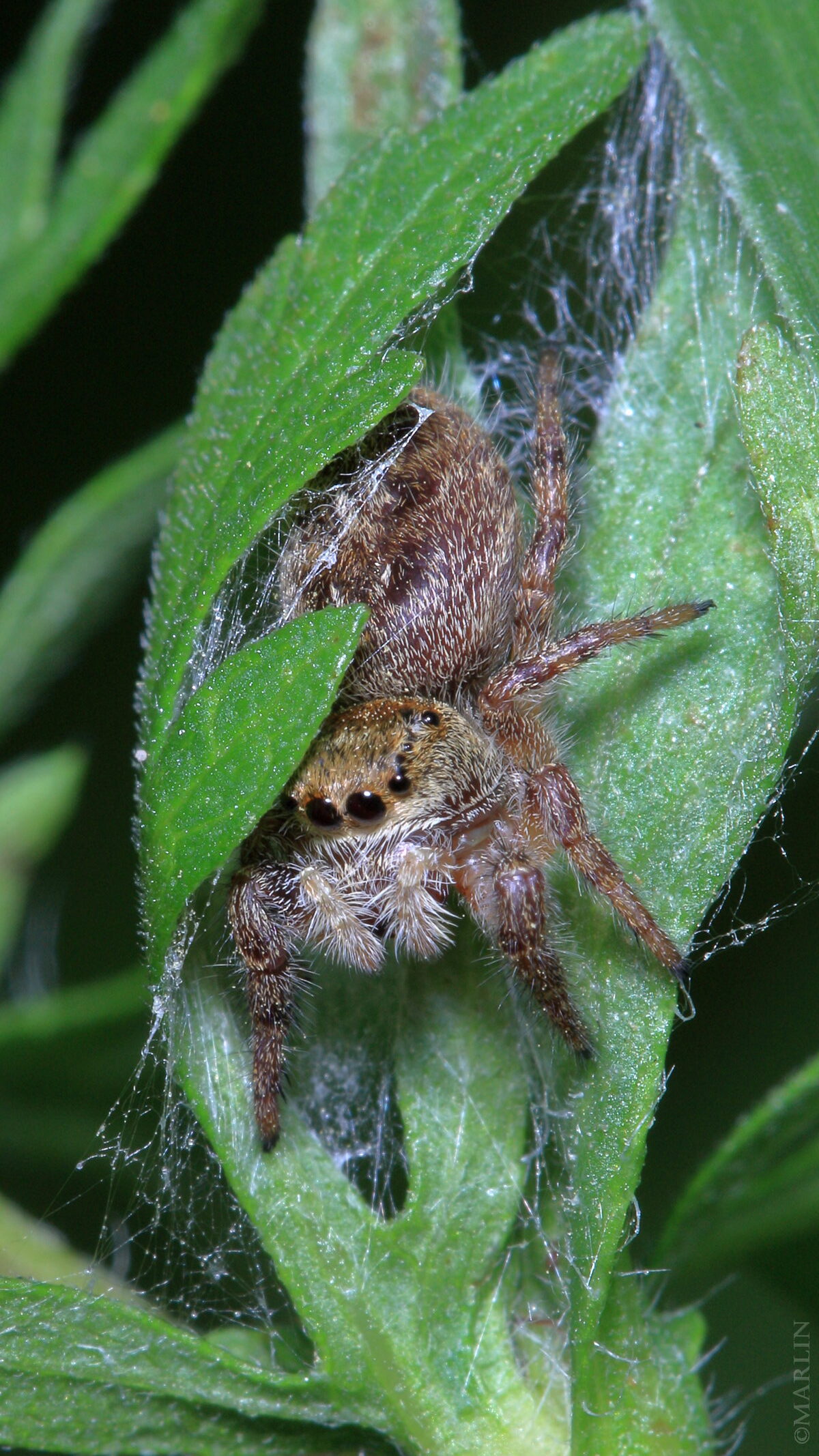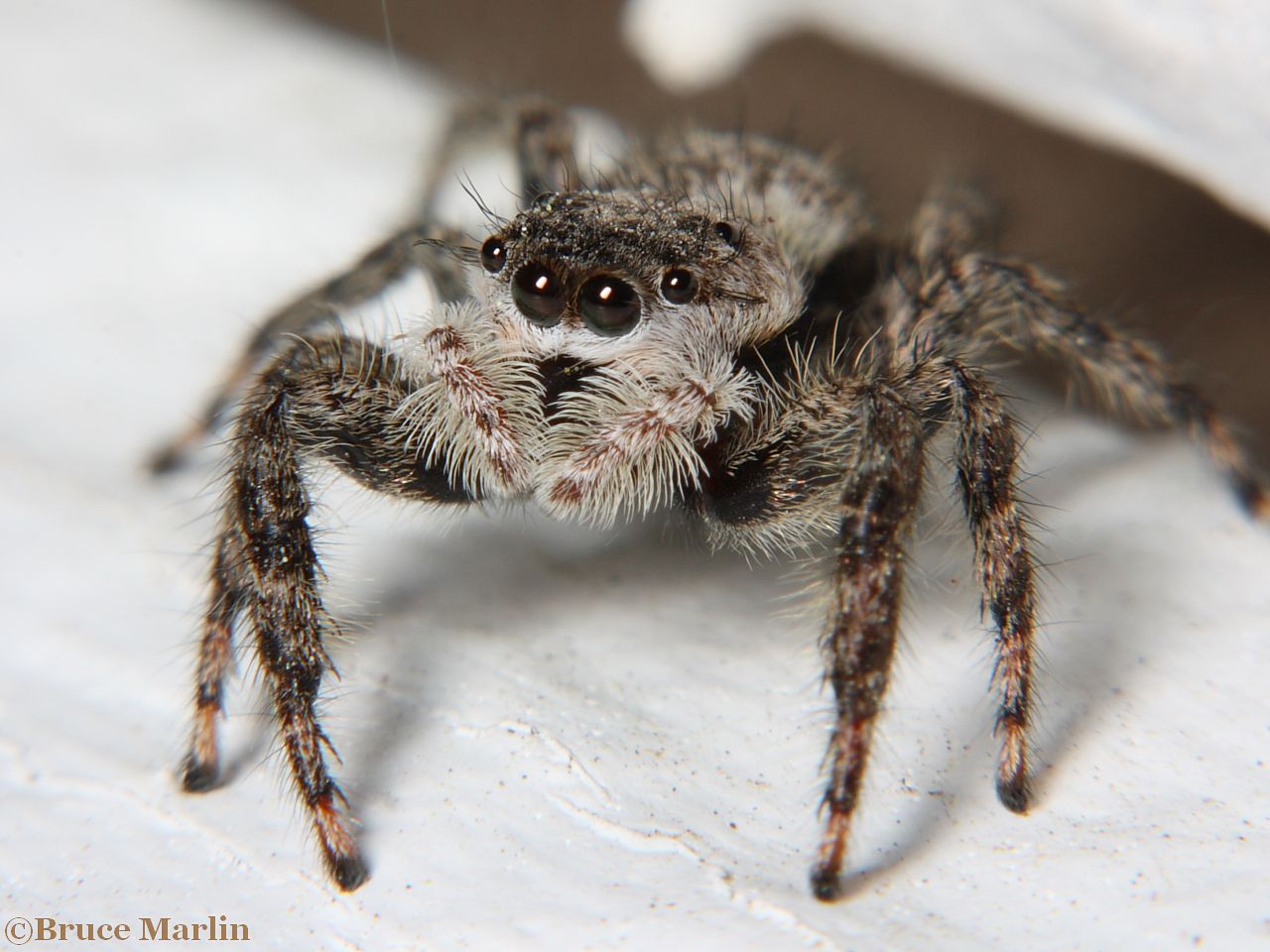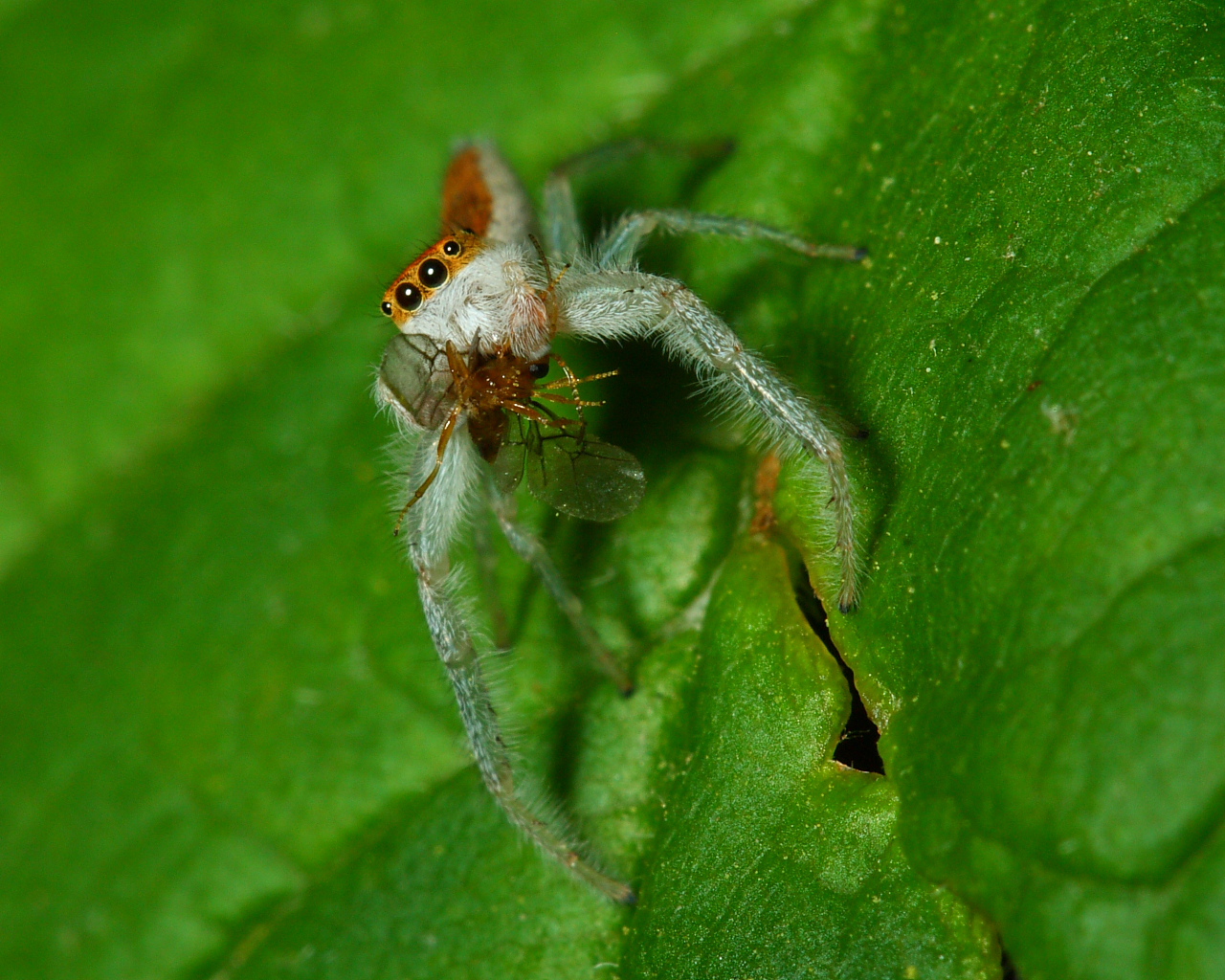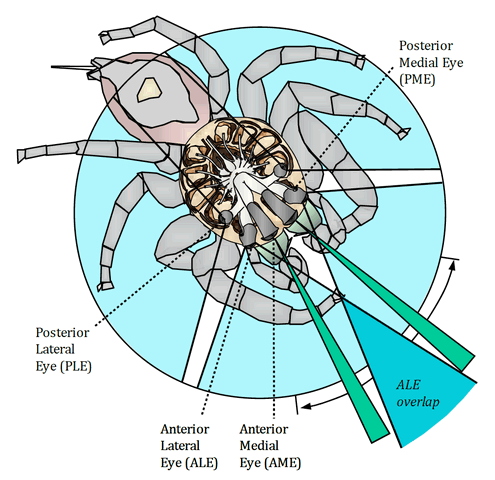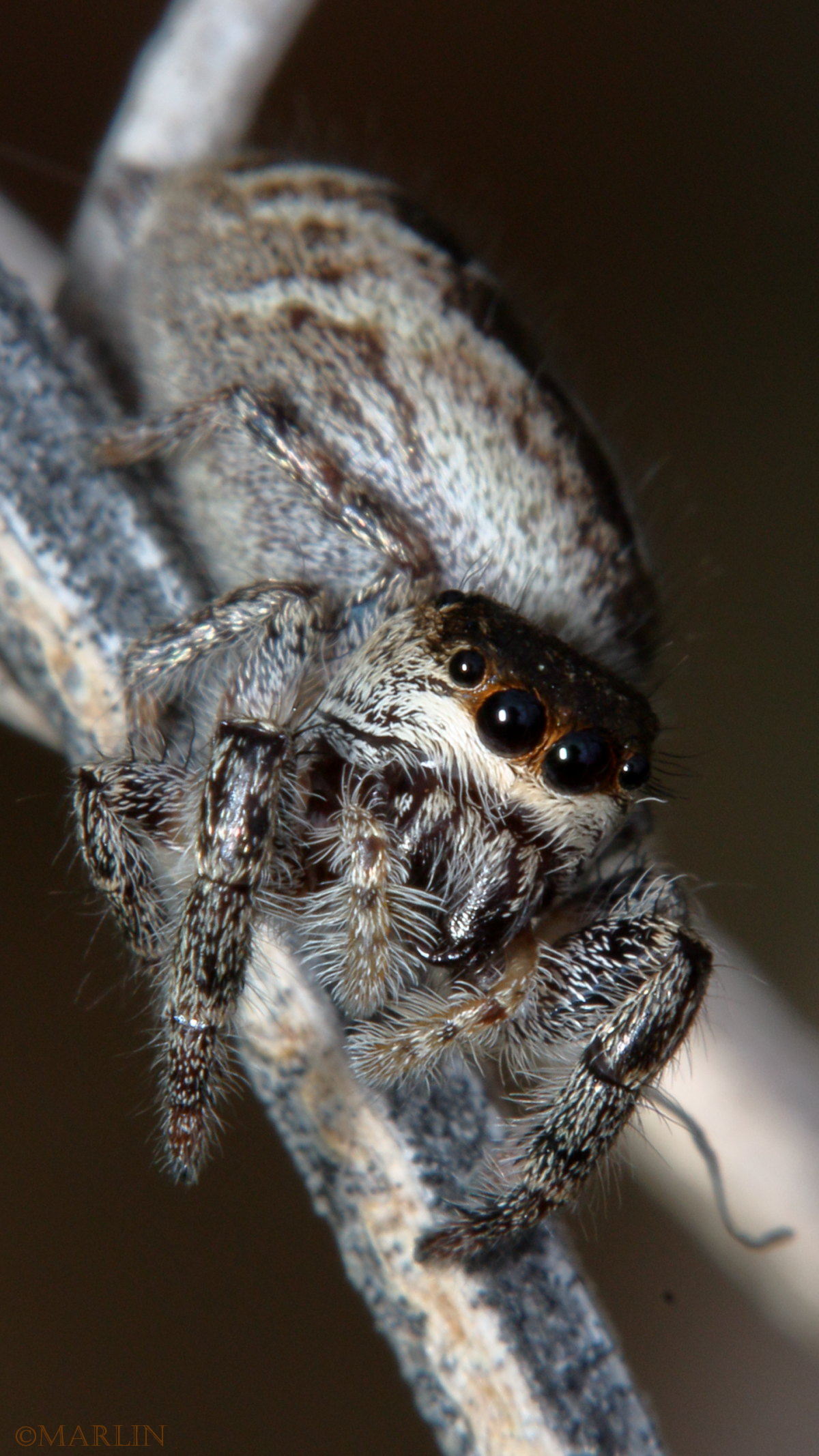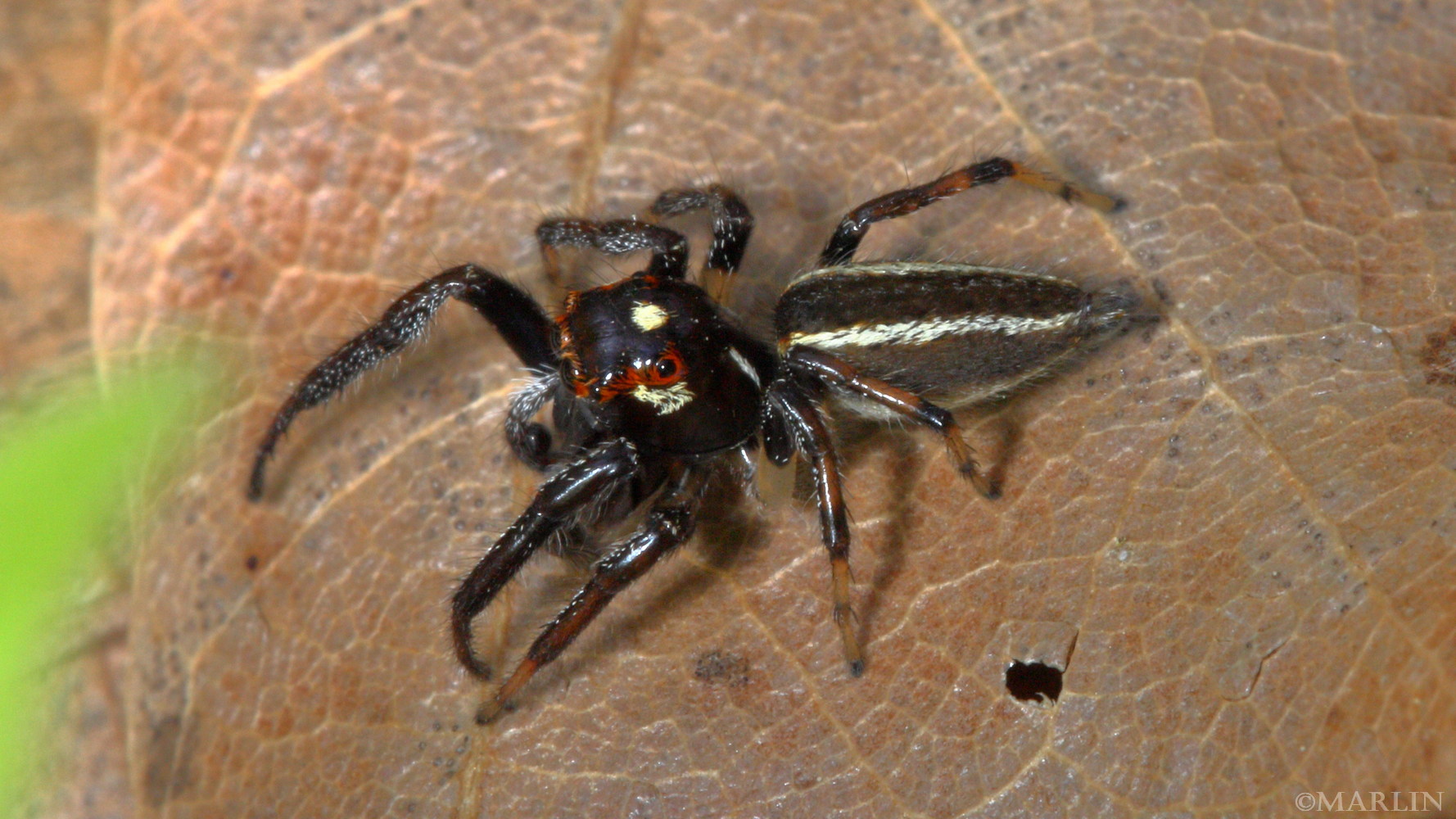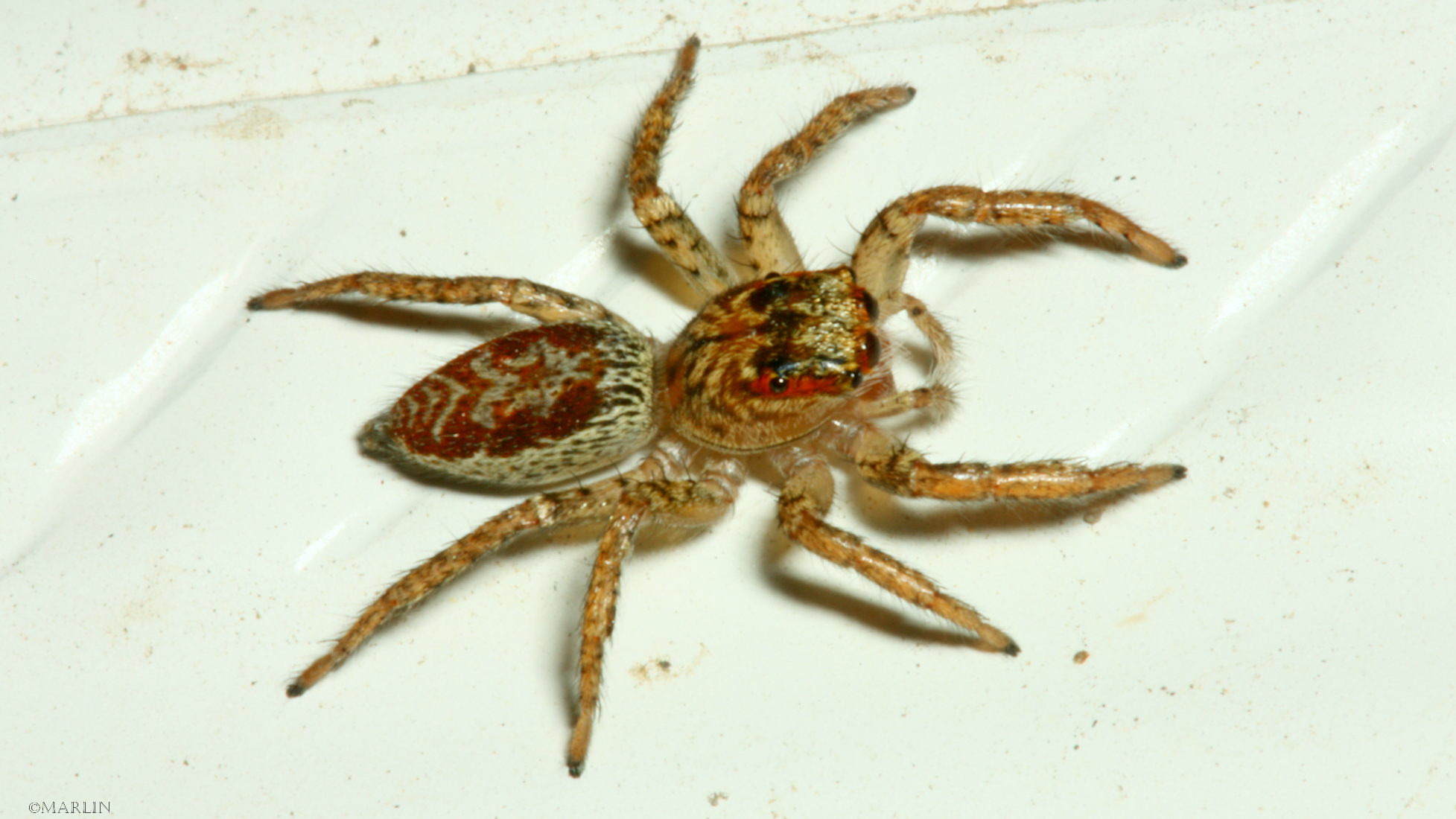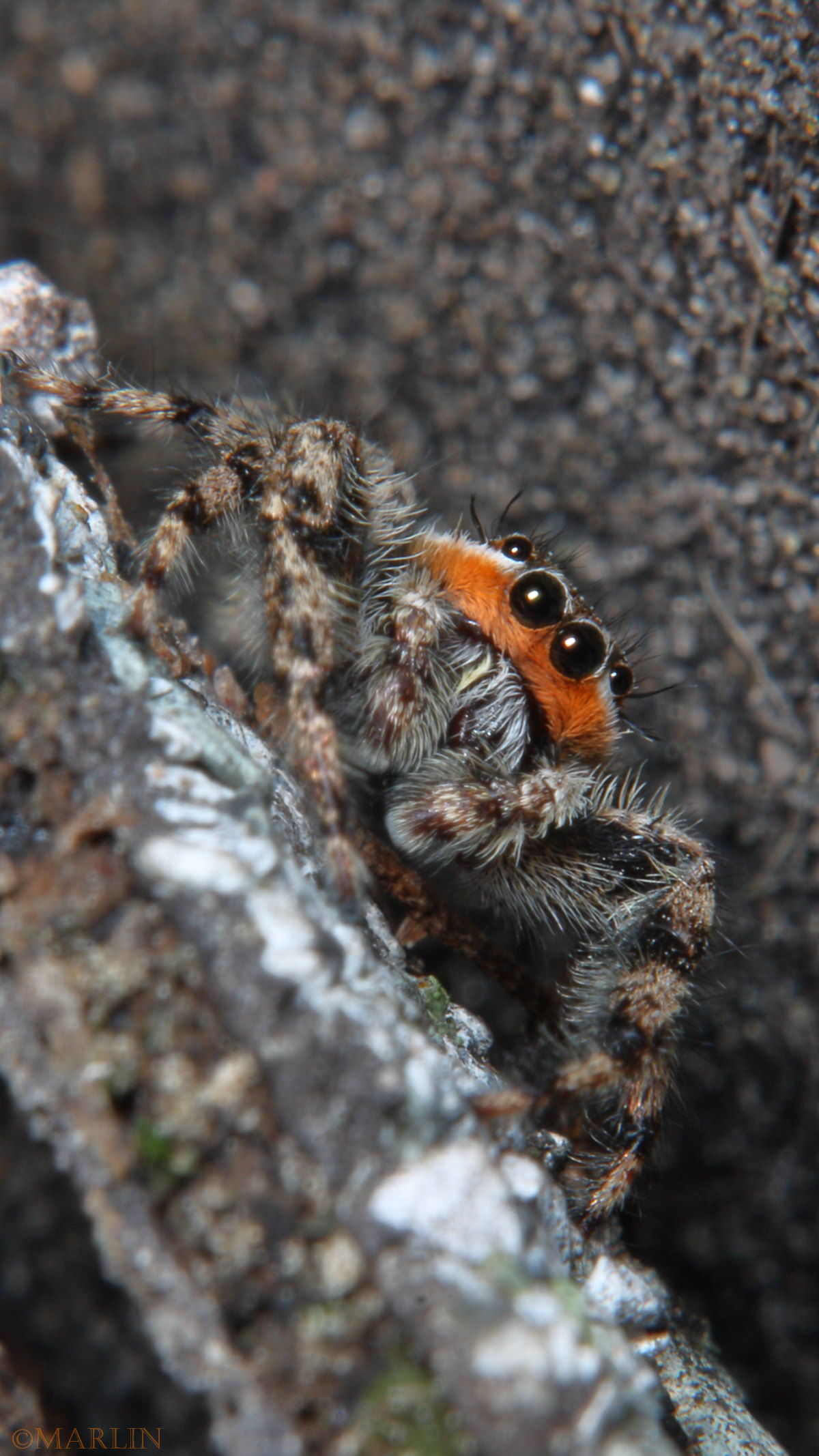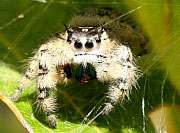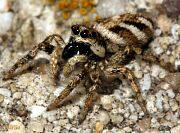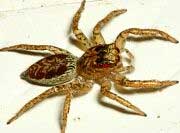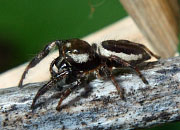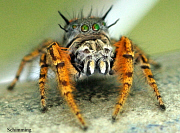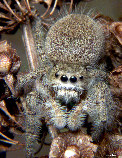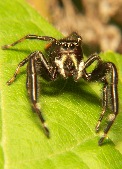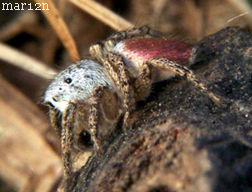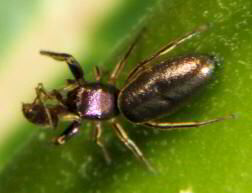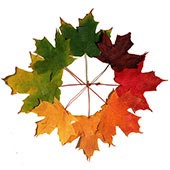Family Salticidae – Jumping Spiders
The bold jumping spider Phidippus audax is one of the largest and certainly one of the most frequently encountered of the Salticids. Their active lifestyle, conspicuous dark-colored body, and frequenting of the flower or vegetable garden environment brings them to the attention of casual observers and gardeners of all stripes.
They will rapidly wave their pedipalps in front of their iridescent green chelicerae while staring you down – and the tiny light show is visually breathtaking!
Phidippus princeps females love to sit in their curled-over leaflet silken retreats and refuse to come out and play.
Family Salticidae contains more than 5,000 species in 500 genera, making it the largest family of spiders.
Jumping spiders, with rare exceptions, do not build webs to snare prey – they only spin small silken retreat webs for moulting or hibernation.
Hentzia Mitrata – This tiny hunter has caught an even tinier lace bug. The spider is only 4mm (about 1/8 inch) long
Jumping spiders have excellent vision, among the highest acuity in invertebrates. The eight eyes are grouped four on the face and four on top of the carapace.
The two large, forward-facing eyes (AME) are tubular behind the lens, with a well-developed musculature, unique to salticids, that supports and moves the retina – the opposite arrangement of our own eyes. [1]
Note: the function of the posterior medial eyes is unknown [2]
Jumping spider’s anatomical points of interest:
- Esophagus passes straight through the brain
- Portion of gut overlies the eyes and brain inside carapace
- Heart extends from abdomen into cephalothorax
- Leg muscles attached inside the carapace operate legs like marionette puppets
- Jumping spider’s brain volume to body size proportionate to human, but visual processing region is larger
- Salticids move retinas inside the eyes to look in different directions, as the lenses are fixed in the carapace
Phanias species female jumping spider Size=8mm
This is a large male jumping spider at 10mm Colonus sylvanus
Dimorphic Jumping Spider – Maevia inclemens is a colorful spider I find charming and peaceful – until they are not. Hate to be a fly or moth in this vicinity.
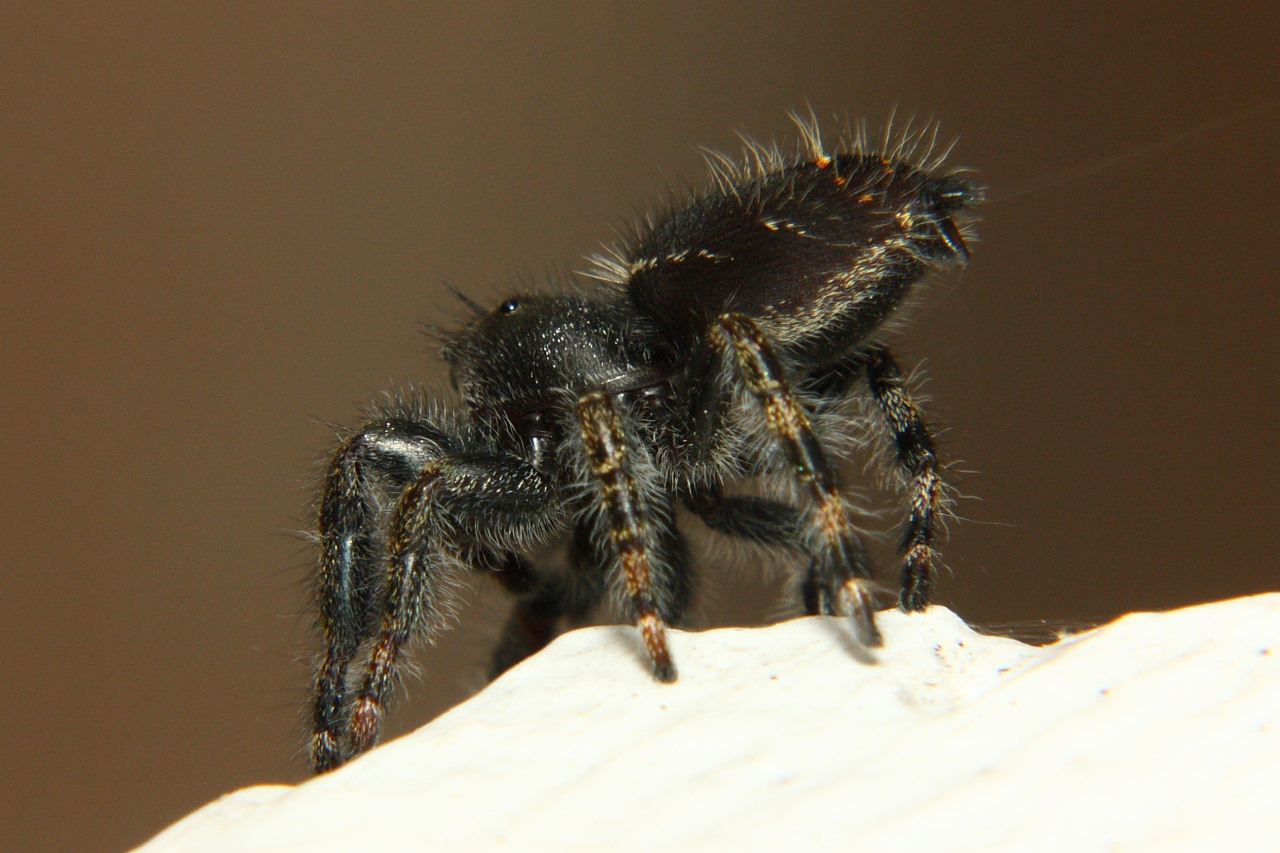
I saw a jumping spider leap from an elevated perch onto a passing moth, capture it in mid-air and swing down while hoisting her self back to where she leapt from with her silken lifeline. If I hadn’t seen it with my own eyes . .
Platycryptus undatus male out and about on the rocks near a small pond.
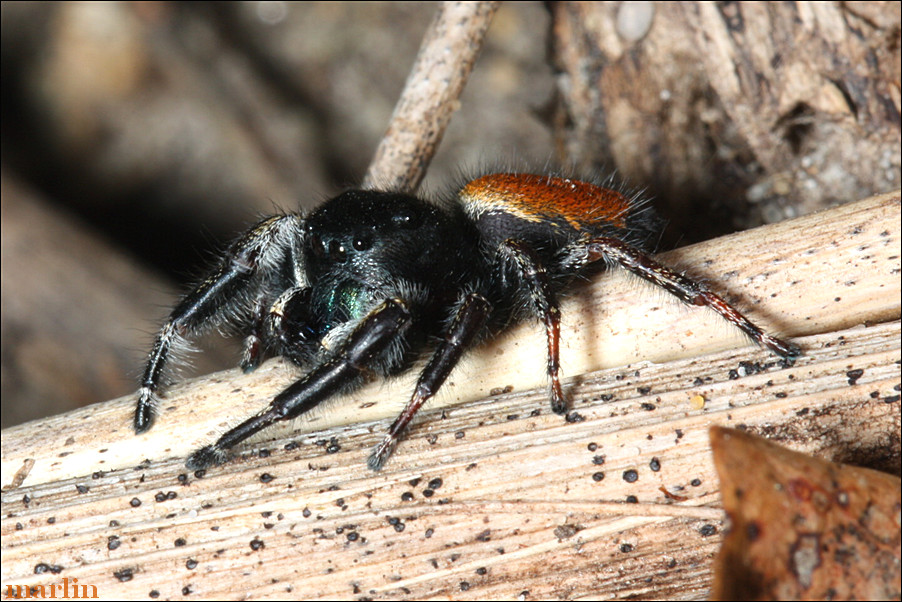
Although a jumping spider can jump more than fifty times its body length, none of its legs has enlarged muscles.
The power for jumping comes from a quick contraction of muscles in the front part of the body increasing the blood pressure, which causes the legs to extend rapidly much as the hydraulics in a low-rider car.
Genus Habronattus is a large diverse genus of medium-sized salticids, primarily ground-dwellers and with highly ornamented males that perform complex courtship displays. Approximately 100 species are known, most from North America.
Genus Tutelina – Dendryphantines characterized by unusual chelicerae. Typically uniform colored, from gray or green to black. Some species are reasonably antlike. Probably all specialize on eating ants.
I started this page in 2002. blah blah blah ok boomer lol
References
- Maddison, Wayne – Tree of Life Web Project, “Salticidae: Jumping Spiders“
- Jumping Spider Vision David Edwin Hill, Creative Commons Attribution 3.0 Unported
- Other references are presented on individual species pages
